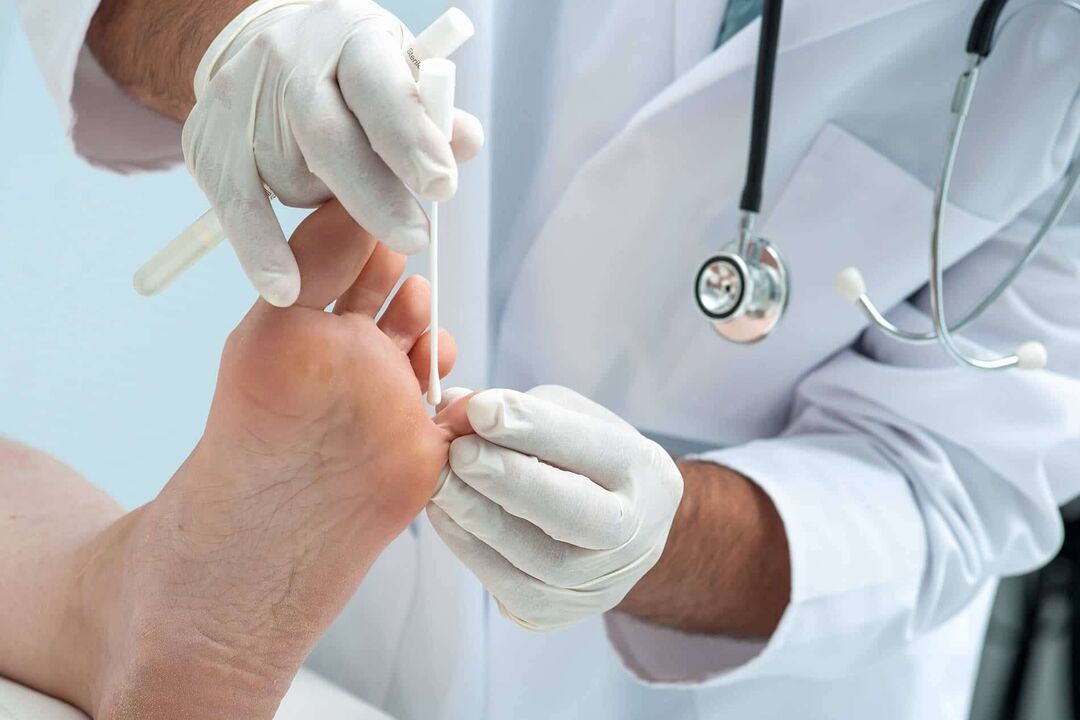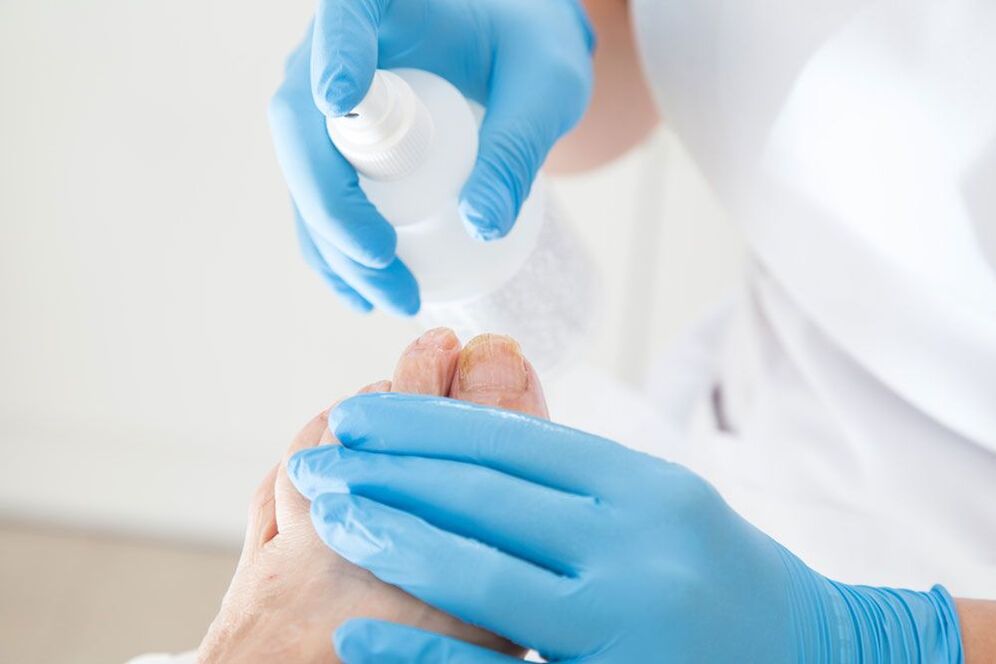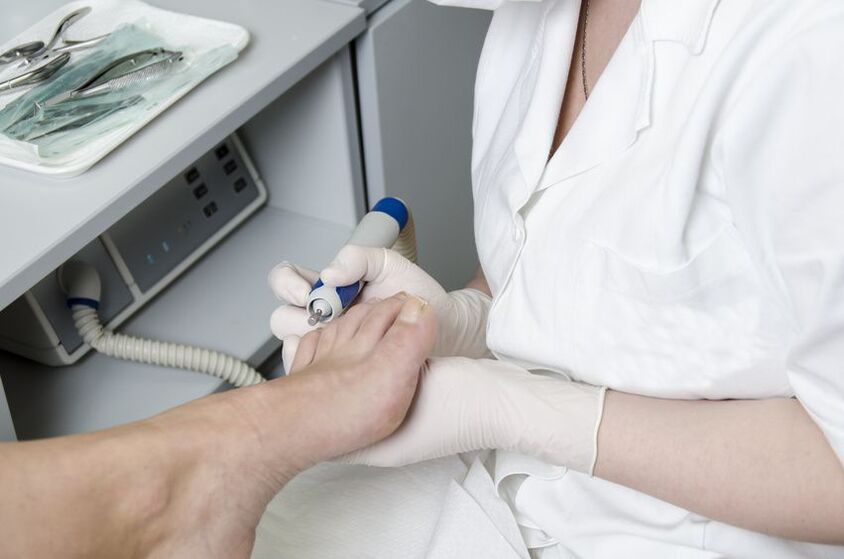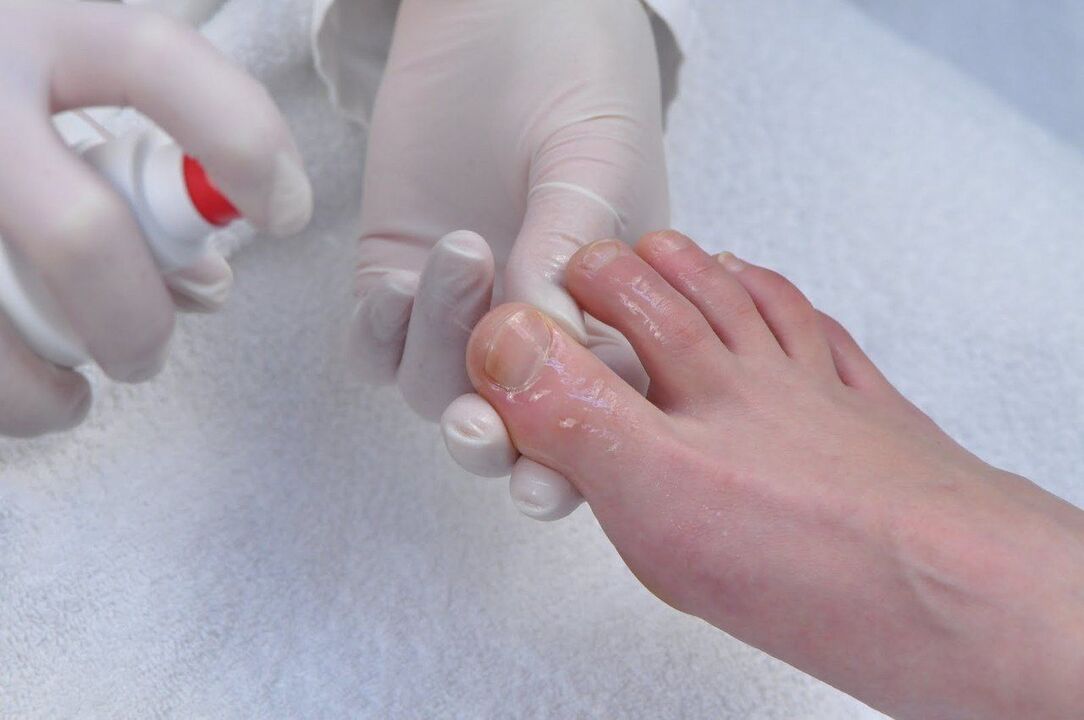Dermatologists and mycologists try not to use formal methods to treat fungi, which include standard prescriptions of ointments and tablets, and lead to the development of a chronic course of fungal infections and serious complications that reduce quality of life:
- Fungal eczema.
- Persistent hair loss.
- Destruction of the nail plate and scarring of the nail bed.
- Chronic inflammation of the glans and vagina, which constantly plagues both men and women, makes sex impossible.
A way to get rid of fungal diseases completely, helping to achieve the following goals:
- Destroy pathogenic bacteria at the site of skin lesions.
- Protects healthy skin (nails, mucous membranes) from the spread of fungal diseases.
- prevent recurrence.
- Restores the normal structure of the skin, hair and mucous membranes while maintaining their elasticity and beauty.
- Removes fungal waste from the body, leading to chronic poisoning and allergies.
- Restores sensitivity of the skin and mucous membranes of the reproductive organs, normalizes sex life.
It all seems logical and as it should be. But in practice, few dermatologists follow all the rules for treating fungal diseases, often limiting themselves to external treatments. Yes, many patients just want to "paint a little" rather than receive full treatment.
Which diseases are clinically treated:
- Onychomycosis is a fungal infection of the nails of the hands and toes.
- Fungal lesions of the skin of the feet and hands.
- Smooth skin fungus.
- Fungal disease of the groin, armpits, lower mammary glands, folds of the gluteal folds.
- Tinea versicolor.
- Scalp fungus, dandruff.
- A fungus that causes seborrheic dermatitis.
- Candidiasis, penile and vaginal thrush.
- Fungal prostatitis.
- Oral mucosa and tongue candidiasis.
- Mycosis of the outer ear.
Of course, the treatment of the fungus depends on its type and the localization of the process. Let's pick out the general stages of treatment:
- Mandatory analysis of scrapings of fungi and, as far as possible, determination of type, susceptibility to drugs, quantity.
- Blood tests, biochemical and immune system status.
- The affected area of nail plate, hair is removed with laser, hardware or surgery.
- Medication: Antifungal drugs in intravenous or tablet form. Lasts 10 days to 4 months (with onychomycosis). Injectable antifungals have been shown to be the best, reducing the treatment time for fungal diseases and reducing the impact on the liver. Topical treatment with antifungal ointments, creams, and solutions in a sequence. Preparations for improving the nail plate, hair growth, restoring the epidermis of the skin and mucous membranes. Local treatment in the form of bathing on the penis and vagina restores the normal microflora of the genitals in genital mycosis. Immunotherapy and removal of mycotoxins and allergens.
- Physiotherapy: Ultraviolet radiation with medical quartz and treatment of the affected area with infrared or ultrasonic lasers.
- Finally - a control test of mushrooms.
Treatment of fungal diseases seems too time-consuming and complicated. It does, but only for doctors! The treatment plan is designed in such a way that the patient does not notice much discomfort during the treatment and everything is easy for him.
Treatment of skin fungus usually takes no time, about 10-20 days. Treatment for hair and nails is longer, up to several months.
But this was not even related to the duration of treatment. The treatment of mycosis should be carried out by professionals, dermatologists, mycologists who are familiar with all the above methods and actively apply them in practice. Specialists in the field are treated at the clinic every day.
Foot Fungus Treatment
The treatment of foot fungus has been performed together with the treatment of other fungal diseases for over 13 years.
Despite the well-known difficulties in treating fungal diseases, clinically developed and used treatments for foot dermatophytes have long demonstrated their effectiveness.
What to expect from a patient who completes a full course of foot mycosis diagnosis:
- Completely destroy the pathogenic fungi on the sole, between the toes, the dorsum of the foot, and the thickness of the nail plate.
- Eliminates itching and unpleasant odors from feet.
- Heals cracks and inflammatory changes in the skin of the feet.
- Restores skin elasticity and eliminates hyperkeratosis - thickening of the skin on the soles of the feet, especially in the heel area.
- Eliminate excessive sweating - hyperhidrosis of the feet.
- Growth of healthy nails.

That is, if, at the initial visit, the dermatologist, mycologist, and the patient see a picture of thickened soles, cracks, sloughing of the epithelium between the fingers, redness of the skin on the feet, frequent shoes and socksWet, sprained, darkened nails, and then a full course of fungal treatment on the feet, this part of the body has a pleasant feeling of comfort, the skin becomes smooth, the smell disappears, and the nails gradually recover.
Treatment steps for tinea pedis
- The diagnostic phase includes the study of pathogenic fungi scraped from the skin and nail plates to determine the pathogenic flora, which is important for the selection of antifungal drugs. To complete the picture, information is needed about changes in the patient's metabolism, which may be the underlying cause of excessive sweating of the skin on the feet and reduced local resistance to fungal infections. This is where blood tests help us.
- Treatment of foot mycosis occurs in several stages, depending on the initial clinical presentation and the type of fungus. Exfoliates keratinized thick layers of skin and affected areas of the nail plate. This is accomplished with special creams, procedures or hardware and lasers to remove the pathological area. The duration of this phase is 1 to 7 days. When the skin is cleansed, topical antifungal therapy can be used to deliver the medication directly to the skin of the feet.
- Systemically acting antifungal drugs, that is, antifungal drugs given by injection or tablet. Of course, an intravenous drip of this drug has proven to be more effective. Additionally, it has been shown to be safer for the liver and reduces treatment time, ranging from 7-14 days for skin lesions and up to 4 months in combination with nail lesions.
- Physiotherapy for foot fungus includes exposure to medical UV radiation, which adversely affects foot fungus, as well as infrared laser therapy that further improves blood supply to the affected area, accelerating skin recovery and nail growth. The duration of this process is 3 to 10 minutes.
- If, as a result of the diagnosis, internal organ problems are identified, lack of trace elements and other substances necessary to deliver antifungal drugs to the skin, regenerate the skin, activate the fight against pathogenic fungi, then additional adjunctive drugs are prescribed to correct these changes: Immunomodulators, ozone therapy, vitamins, hepatoprotectants, iron, calcium and complex of vitamins and trace elements.
- This foot fungus treatment usually eliminates excessive sweating and odor. But sometimes medicines that block the sweat glands in the skin of the feet are prescribed, laser treatments and liquid nitrogen freezing massages are performed.
- After treatment, check to see if the fungus on your feet has been destroyed. Duplicate analyses were performed on scrapings of fungi. But usually the result is close to 100%.

A very important step in the treatment of foot fungus is to specify follow-up prevention of recurrence, which includes skin care products and treatment of shoes where fungal spores may remain.
Treatment for foot fungus is very diverse. It is impossible to describe all treatment options in one article. The doctor of the clinic dermatologist, after examination and based on the results of the laboratory diagnosis, will be able to determine the most suitable technique and comprehensive treatment for your particular case of dermatophyte of the foot.
Nail Fungus Treatment
The treatment of nail fungus is one of the main areas of clinical work in the specialized center, for which the specialists deal in detail with each stage of the treatment of onychomycosis.
It has long been known that the treatment of fungal diseases is a serious problem, even more serious than the treatment of bacterial infections. Uncontrolled use of various antifungal creams, tablets, solutions, varnishes has led to the growth of large numbers of resistant fungi. Unlike antibiotics, these drugs are available in very limited quantities. Therefore, in order to achieve the maximum effect of treating patients, we must adopt a scientific and practical approach to the treatment of toenail and fingernail fungus, not only limited to the formal prescription of external treatment of onychomycosis.
What you will see after completing the full course:
- Restores the color and structure of the nail plate.
- Normalization of nail growth and its shape.
- Laboratory-proven, nail fungus disappears.
- The bad smell and excessive sweating of the feet will go away.
- Inflammatory processes in the perianal ridge, interdigital space, and skin on the soles or palms of the feet will disappear. That is, the redness, itching, peeling, crying caused by the fungal disease will disappear.
Nail fungus treatment lasts 2-3 months on hands and 3-4 months on legs. But, of course, everything varies from person to person, depending on the type of pathogenic fungus, the speed of nail growth in a particular person, the presence of concomitant lesions in internal organs and blood vessels. For example, in venous or arterial disease of the lower extremity, when the delivery of drugs and nutrients to the nail is interrupted, treatment takes much longer and results are difficult to achieve.
Healed with fingernail fungal control after 6 months, and toenail fungus after 1 year.
The clinic employs dermatologists trained in all methods of nail removal and professionally selects the best treatment option for each patient diagnosed with fingernail fungus.
How is nail fungus treated clinically?
Nail mycosis is a chronic disease, so treatment has several stages and is always preceded by a detailed diagnosis to reveal the type of fungus and the possibility of complex treatment, which unfortunately cannot be prescribed for everyone.
Treatment steps for nail fungus:
- Mycologist appointment.
- diagnosis.
- direct treatment.
During the initial appointment, the doctor will assess damage to the nail plate and surrounding skin, which is usually the case if it is also involved in the pathological process. He would examine the skin, mucous membranes, other parts of the hair, because some cases were referred for a suspected fungus, and the final diagnosis sounded like onychomycosis, that is, symptoms similar to the disease, but without an infectious agent. It is associated with metabolic disturbances, hormone levels, chronic skin diseases, and damage to the nail matrix and bed.
Next, a diagnostic action plan is developed to collect nail plate particles and blood for examination.
Diagnosis of finger and toenail mycosis
| Do not. | analyze | Target | During execution |
|---|---|---|---|
| one. | Scrape mushrooms from nail plates and nail beds | Identify fungal types to choose the most effective drug | 1-3 days |
| 2. | sow mushrooms | Determining the type of fungus and its susceptibility to antifungal drugs | 7-10 days |
| 3. | PCR diagnosis of Candida | Identification of fungal diseases caused by yeast-like fungi | 1-2 days |
| 4. | blood chemistry | Determine liver and kidney function status when planning systemic antifungal therapy. Metabolic disturbances that cause nail changes can also be detected. | 1 day |
| 5. | Hospital complex (syphilis, HIV, hepatitis, coagulation diagram) | If you plan to remove the nail plate or the affected part of the nail | 1 day |
This is a complete list of the main diagnostic measures, but not everyone is assigned all of these studies by a mycologist. For example, in the topical form, blood tests are not required when plate removal and oral or instilled antifungal medications are not required.
Crops are also rarely carried out due to low sensitivity.
Therefore, people treating toenail or fingernail fungus should always consult a dermatologist or mycologist before starting tests, applying creams and drinking pills and vice versa.
It is also very important to properly sample the material in the affected area to identify the fungus. 90% of its detection in a given patient depends on this. Not only the hard part of the nail plate was studied, but also the loose material of the nail bed, which contained the most pathogens.
But even with this approach, labs aren't always immediately sure whether a fungal infection is present.
There were obvious signs of onychomycosis, and the analysis was repeated 3 times and the results were negative.
Therefore, a diagnosis is made, the fungus is tested, its type is determined, the condition of the internal organs is checked, and treatment is started.
Mycologist treats nail fungus

Everything here depends on the clinical situation. Surface forms of mycosis can be cured by the use of external agents (such as varnishes, solutions containing drugs harmful to fungi) and laser processing of the plates. Full lesions of the nail require removal of the affected area and oral or intravenous administration.
We will consider the treatment stage of advanced toenail fungus, as this is the most difficult stage of onychomycosis to treat with medication.
Remove the fungus-affected part of the nail or nail plate.
Therefore, we will immediately remove the large accumulation of fungi in the body, making the nail bed easy to access medicinal substances to destroy the microorganisms that remain in it. It also reduces the absorption of fungal waste into the bloodstream, reducing allergic and toxic effects on the body.
There are several ways to remove boards affected by fungal disease. The choice depends on the clinical situation and the doctor treating the patient's nail fungus, his most specialized technique:
| Do not. | method | how it works | benefit | price |
|---|---|---|---|---|
| one. | nail removal | Most commonly used. Saw the affected part of the nail plate down to the nail bed and periungual ridge with a special knife | Safety minimal discomfort The patient does not lose the ability to work |
1000–1500 rubles |
| 2. | Surgery | After conduction anesthesia of the finger, the nail plate is fully or partially removed if necessary. Apply an antibacterial dressing. | The most "clean" removal of the affected nail is when the fungus is removed, including from below the nail ridge, where the fungal layer on the nail bed is removed. Plastic surgery can be performed on a curved nail bed. | From 2500 rubles. |
| 3. | laser nail removal | The treated fingers were also anesthetized. Laser beam burns the fungus-affected nail area by capturing the nail bed | Maximum removal of fungal clumps without penetrating under the rear roller | From 3000 rubles. |
Hardware technology is used more frequently as it creates the fewest complications, does not damage growth areas and nail beds, is affordable, but requires more frequent cleaning of the nail bed as it does not provide a fully hygienic nail bed from fungus on the fingers.
Of course, after surgery or laser ablation, the amount of fungus remaining is small, but the length of the recovery period, possible disability, and dressings limit the use of these methods in some patients.
Destruction of fungi by external means.
On the nail bed cleaned after removal of the nail plate, an antifungal solution was used daily for several months until normal nail growth and negative analysis for fungus. Antifungal varnish can also be added to the growing edges of the nail plate.
Oral and intravenous systemic antifungal drugs. This is the main treatment stage after nail removal.
It is necessary to ensure that the drug is delivered to the nail matrix, where the new nail grows, and the nail bed with blood flow.
Based on the test, the doctor will choose the right medicine for the patient and how to administer it.
Consider the type of fungus, the condition of liver and kidney, and the convenience for patients.
For the liver, drugs that enter the blood and nails intravenously, bypassing the gut and liver, respectively, are safest.
Treat for up to 3-4 months if the fungus is on the hands and 2-3 months if there are lesions on the feet.
There are several treatment options for nail fungus, including daily medication and intermittent sessions.
Have blood tests at least once a month to check liver and kidney indicators. If it deviates from the norm, discontinue treatment.
- Physiotherapy for Nail Fungus - Helps destroy infection and improve drug delivery, accelerates nail plate growth. UV radiation from the nail bed is harmful to fungi. 10-15 times, 3-5 minutes each time. Infrared Laser - Improves blood flow in the growth zone and nail bed area, ensures enhanced drug delivery to the affected area, and accelerates the growth of new plates impregnated with antifungal agents. Electrophoresis of antifungal drugs is the one that produces the maximum possible concentration of the drug directly at the focal point of the pathological process.
- Perform regular hardware cleaning of the nail bed to remove hyperkeratotic layers and fungal residue. It is important for people with fungal nail disease to visualize the entire treatment process and understand that this is a fairly long-term event, the success of which largely depends not only on the doctor treating the nail fungus, but also on themselves. It's important to take medication and antifungal solutions regularly, treat your shoes regularly, follow physical therapy routines, and clean your nail beds.
Which doctor treats nail fungus?
Nail fungus is a serious problem. Everyone who has encountered a fungal disease that causes nail plate failure knows this. It has a long treatment time, is far from always having great results, and in almost 95% of cases the use of various ointments, creams, solutions has no effect at all.
But, in truth, not everything is so sad if you know which specialist to contact for nail fungus. Even in onychomycosis, success is guaranteed.
The doctor who treats nail fungus is a mycologist or dermatologist with experience in managing such patients.
Why experience matters, not just theoretical knowledge. In fact, the treatment for a fungal infection affecting the nail plate lasted over a month. Results are not immediately visible and assessing effects can be very difficult. Selecting a full range of procedures and medications for a particular patient is also not an easy task, as each clinical situation is different.

There is a lot of information online about antifungal medications, various lasers, physical treatments, and nail removal. The patient, self-medicating, started buying medication after medication but received no results, despaired and stopped all attempts to get rid of the fungus. The same thing happens when treatment is prescribed by a doctor who has no experience monitoring such patients.
The clinic sees doctors treating leg and arm fungus every day, and there is a well-equipped fungal room where the diagnosis and treatment of all stages of onychomycosis are performed.
Which doctor treats nail fungus effectively
- This must be a dermatologist or mycologist.
- He has extensive experience in the examination and treatment of nail mycosis.
- Know how to remove the affected nail plate and clean the nail bed.
- Learn about the stages of systemic treatment of onychomycosis and introduce the process of physical therapy methods.
- The treatment strategy can be changed in time or a procedure, a drug, can be added in a timely manner, and the previously prescribed treatment is less effective.
- It has the ability to treat nail fungus clinically using all modern methods and necessary equipment.
Treatment for this fungal disease is planned, not an emergency procedure. Therefore, after the examination, the doctor who treats nail fungus will explain to the patient all possible treatment options, but the choice is always up to the patient.

Courses are long, regardless of the technique chosen, and each patient must understand the effectiveness of each method from the start:
Treatment of nail fungus with external methods (solution, varnish, ointment) - the effectiveness is less than 10%, that is, it only contributes to the initial superficial form.
Up to 60% efficiency using a comprehensive approach without removing the affected area of the nail.
Complex treatment to remove the affected part of the nail plate and physiotherapy - up to 90-95% efficient.
Usually, at the first appointment, the doctor who treats nail fungus will say to the patient: if the patient is ready for a 3-4 month course of onychomycosis comprehensive treatment, success can be achieved. If not, then it's best not to start. Money, time will be spent and the results are questionable. It's a disease that requires long-term and pedantic treatments for doctors and patients, where even the smallest details matter.
























